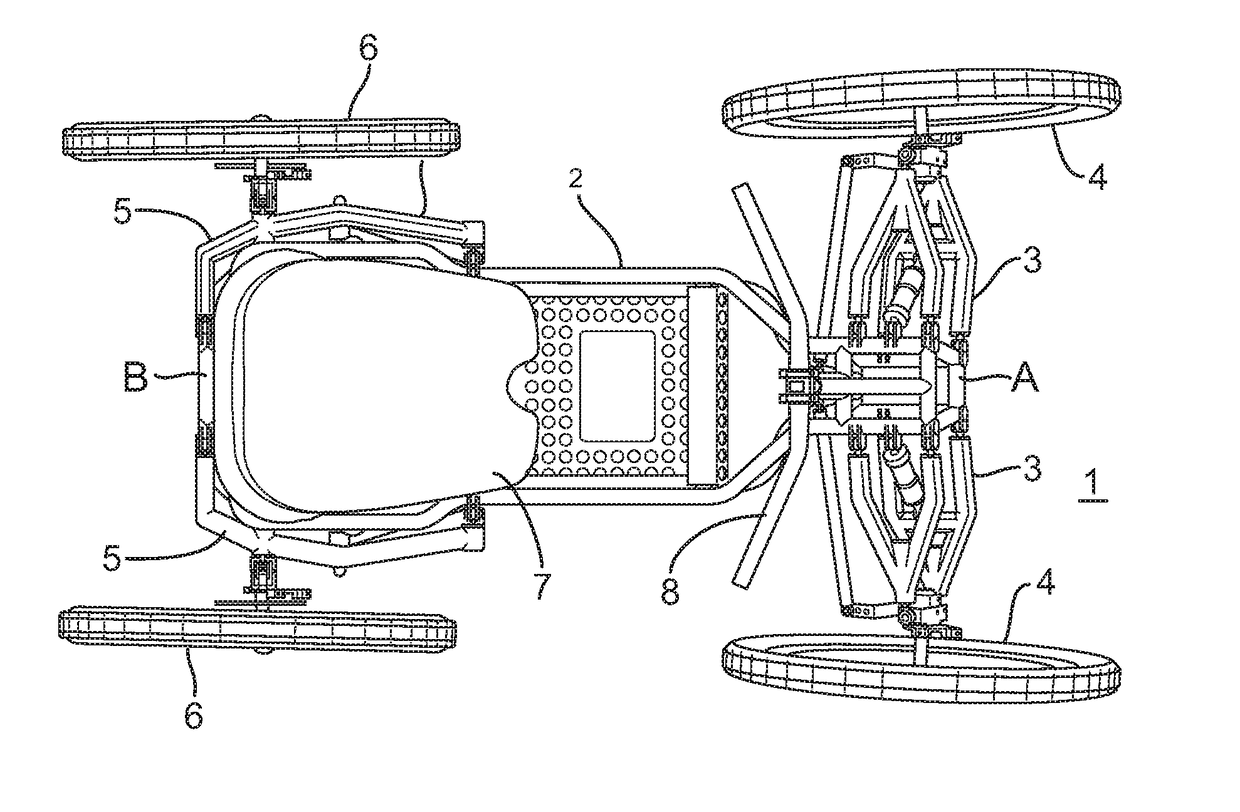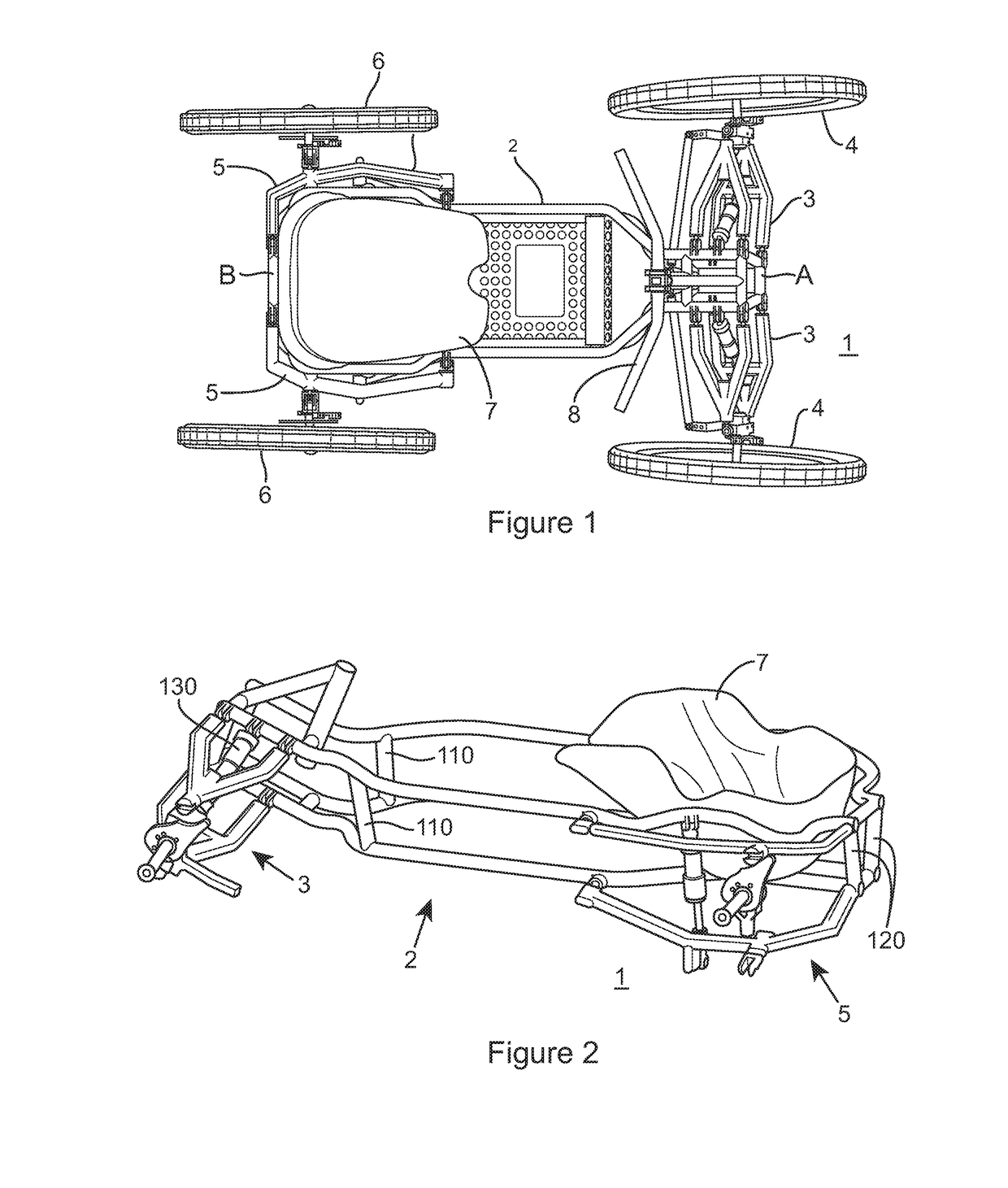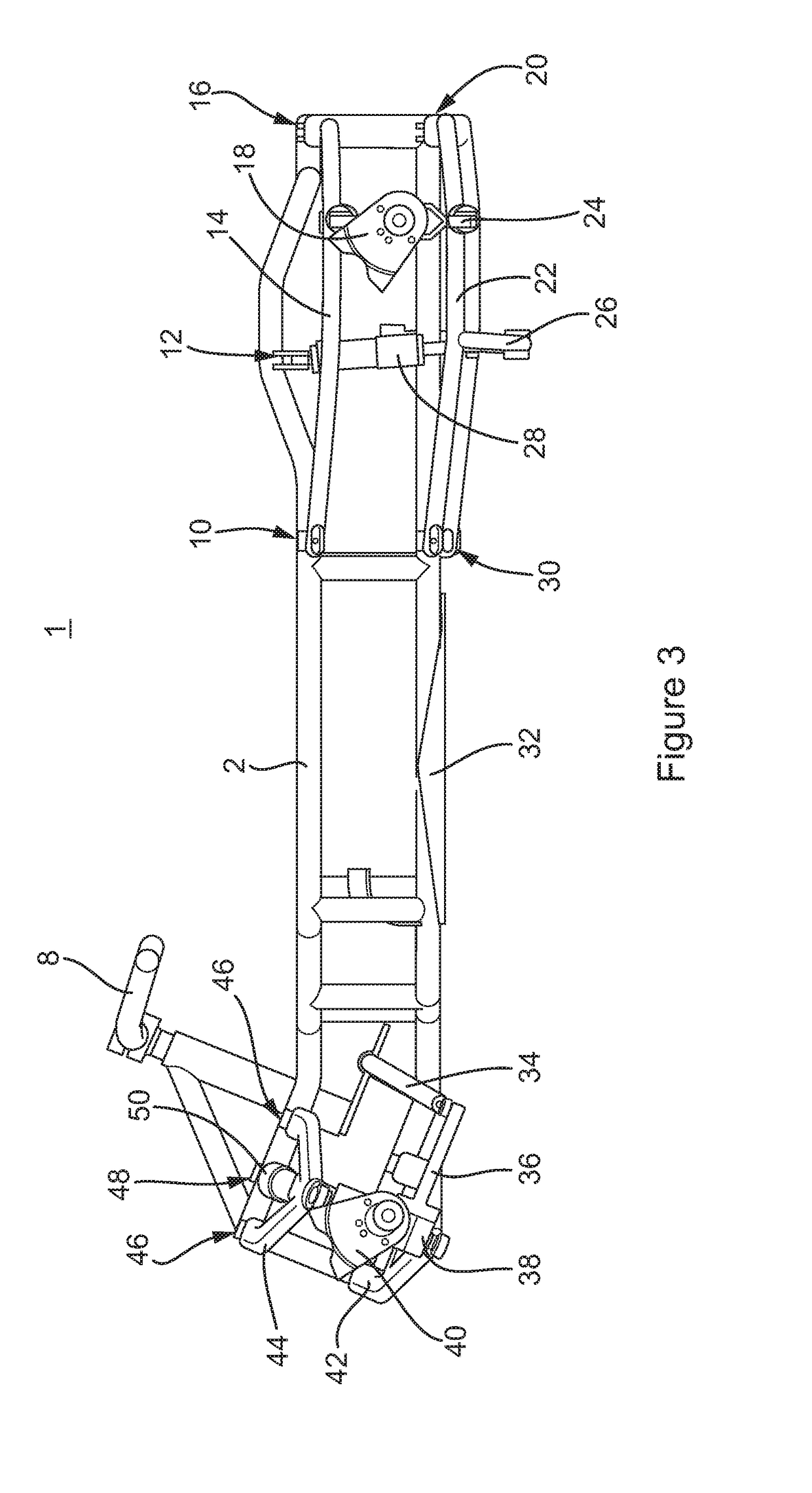Human-Propellable Vehicle
a human-propelled vehicle and suspension technology, applied in the direction of vehicle mounted steering controls, resilient suspensions, pivoted suspension arms, etc., can solve the problems and reducing the workload of the damper and suspension components. , to achieve the effect of reducing the wheel to damper motion ratio, reducing workload, and increasing the lifespan of the damper and suspension components
- Summary
- Abstract
- Description
- Claims
- Application Information
AI Technical Summary
Benefits of technology
Problems solved by technology
Method used
Image
Examples
Embodiment Construction
[0021]The invention will now be described by way of example with reference to the following Figures in which:
[0022]FIG. 1 schematically illustrates a top view of a human-propelled vehicle;
[0023]FIG. 2 schematically illustrates a 3D view of the human-propelled vehicle;
[0024]FIG. 3 schematically illustrates a side view of the human-propelled vehicle;
[0025]FIG. 4 schematically illustrates another top view of the human-propelled vehicle;
[0026]FIG. 5 schematically illustrates a front view of the human-propelled vehicle;
[0027]FIG. 6 schematically illustrates a bottom view of the human-propelled vehicle; and
[0028]FIG. 7 schematically illustrates a rear view of the human-propelled vehicle.
[0029]Referring first to FIG. 1, a top down view of a human propelled vehicle 1 is shown. The human propelled vehicle 1 comprises a chassis 2, a front wheel assembly 3, front wheels 4, a rear wheel assembly 5, rear wheels 6, a seat 7 and handlebars 8. In use, a rider sits in the seat 7 and is able to use h...
PUM
 Login to View More
Login to View More Abstract
Description
Claims
Application Information
 Login to View More
Login to View More - R&D
- Intellectual Property
- Life Sciences
- Materials
- Tech Scout
- Unparalleled Data Quality
- Higher Quality Content
- 60% Fewer Hallucinations
Browse by: Latest US Patents, China's latest patents, Technical Efficacy Thesaurus, Application Domain, Technology Topic, Popular Technical Reports.
© 2025 PatSnap. All rights reserved.Legal|Privacy policy|Modern Slavery Act Transparency Statement|Sitemap|About US| Contact US: help@patsnap.com



